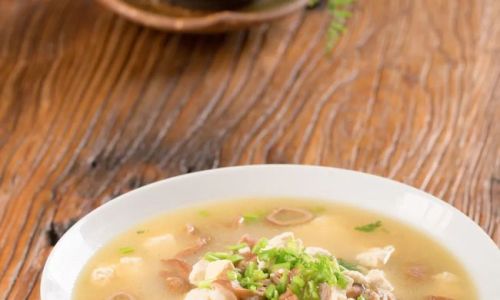Introduction
Frying a whole fish is a culinary art that combines the simplicity of fresh ingredients with the complexity of precise cooking techniques. Among the various species of fish, the black fish—often referred to as snakehead fish or channa in some regions—stands out due to its firm flesh, rich flavor, and versatility in cooking. Its meaty texture holds up well to frying, making it an excellent choice for those who enjoy the crispiness of fried fish skin paired with moist, flavorful flesh. In this guide, we will delve into the step-by-step process of how to fry a whole black fish, ensuring that you achieve a golden-brown exterior and a juicy, flavorful interior.
Section 1: Preparation and Selection
Choosing the Right Fish

The first step in frying a whole black fish is selecting a fresh one. Look for fish with firm, shiny skin and bright, clear eyes. The gills should be red and moist, and there should be no strong, unpleasant odor. Freshness is crucial as it directly impacts the taste and texture of the final dish.
Cleaning and Scaling
Once you have your fish, it’s time to clean and scale it. Start by rinsing the fish under cold running water to remove any dirt or debris. Use a fish scaler to remove the scales from both sides of the fish. Be careful not to cut into the flesh. Next, use a sharp knife to make a shallow cut behind the gill plates and pull out the gills. Cut the fish open from the vent (the small opening near the tail) to the head, and remove the internal organs, including the stomach, intestines, and any black membrane lining the cavity. Rinse the fish thoroughly inside and out to ensure all traces of blood and internal organs are removed.
Seasoning and Marinating
Pat the fish dry with paper towels to remove excess moisture. This is important because moisture can prevent the fish from frying evenly and achieving a crispy exterior. Season the fish inside and out with salt, pepper, and any other spices or herbs you prefer. For a traditional flavor, consider using a blend of garlic powder, paprika, and a pinch of cayenne pepper. Let the fish marinate for at least 30 minutes to allow the seasonings to penetrate the flesh.
Section 2: Preparing the Frying Environment
Choosing the Right Oil
The type of oil you use for frying makes a significant difference. Vegetable oils like peanut oil, canola oil, or sunflower oil are ideal because they have a high smoking point, which means they can be heated to higher temperatures without breaking down and producing harmful compounds. Avoid using olive oil or butter for deep-frying as they have lower smoking points and may impart unwanted flavors.
Heating the Oil
Fill a deep fryer or a large, heavy-bottomed pot with enough oil to fully submerge the fish. Heat the oil to a temperature of around 350°F (175°C). Use a deep-fry thermometer to monitor the temperature accurately. Maintaining the correct oil temperature is crucial for achieving a crispy exterior without overcooking the interior.

Prepping for Frying
Before frying, dust the seasoned fish lightly with flour or cornstarch. This will help form a crispy crust and prevent the fish from sticking to the bottom of the pot. Shake off any excess flour to avoid making the oil too thick.
Section 3: The Frying Process
Careful Lowering
Using a pair of long, sturdy tongs or a fish spatula, carefully lower the fish into the hot oil. Make sure to do this gently to avoid splashing hot oil. If your pot is not large enough to fully submerge the fish at once, you can fry it in two batches.
Frying Time
Fry the fish for about 3-4 minutes on each side, or until the skin is golden brown and crispy. The exact frying time may vary depending on the size and thickness of the fish. Use the tongs to gently flip the fish halfway through cooking. Be patient and avoid over-flipping, as this can disrupt the formation of the crispy crust.
Checking for Doneness
To check if the fish is done, insert a fork into the thickest part of the flesh (usually near the head). The flesh should be opaque and flake easily when pressed with the fork. If there is any resistance or the flesh appears translucent, continue frying for another minute or so.
Draining and Serving

Once the fish is cooked, carefully remove it from the oil using a slotted spoon or fish spatula and let it drain on a wire rack or paper towels to remove excess oil. This step is crucial for achieving a light, crispy texture.
Section 4: Enhancing Presentation and Flavor
Garnishing and Serving
To elevate your fried black fish, consider garnishing it with freshly chopped herbs like parsley, cilantro, or dill. A squeeze of lemon juice adds a refreshing brightness that complements the rich flavor of the fish. Serve the fish hot, accompanied by sides like lemon wedges, tartar sauce, or a simple green salad.
Creative Variations
For added flavor and texture, you can experiment with different coatings before frying. For instance, a thin layer of breadcrumbs mixed with Parmesan cheese and herbs can create a delightful crunchy exterior. Alternatively, a batter made from flour, baking powder, eggs, and milk can provide a light, airy coating.
Conclusion
Frying a whole black fish is a rewarding culinary endeavor that combines the art of seasoning, the science of frying, and the joy of sharing a delicious meal. By following the steps outlined in this guide, you can achieve a perfectly fried fish that is both visually appealing and bursting with flavor. Remember, the key to success lies in selecting fresh ingredients, maintaining the correct oil temperature, and being patient during the frying process. With practice, you’ll soon master the technique and be able to impress your friends and family with your culinary prowess. Enjoy your culinary journey and bon appétit!




0 comments